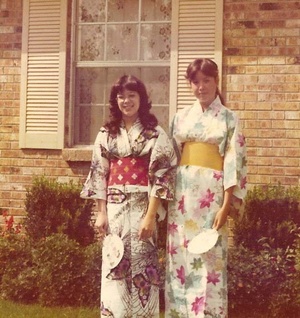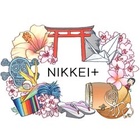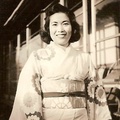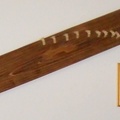My best friend Brenda noted recently that we and our parents are a dying generation. We are the daughters of U.S. soldier dads and Japanese moms. These soldiers fell in love with Japan, and our moms during their tours of duty in the aftermath of World War II, and brought their brides home to the U.S. My parents have both passed away, as well as Brenda’s dad. Her mom is now 80.

Linda’s dad Ed and mother Joyce (Hisae) enjoying a picnic outing with her mother’s family at Hakone, Japan, around 1953.
Brenda and I are only children and are more like sisters than friends. We say we are half-Japanese and half-Southern, as our dads were true sons of the South, born and raised in rural Tennessee and Mississippi. While being Japanese brings its own cultural identity, so too, does being from the South, through language, food, and music, among other things. It isn’t stereotyping to note that we say “y’all” a lot and sometimes speak with a twang; like our dads, we love sweet tea, barbeque, and all things fried; and we have Elvis, B.B. King, as well as country music and ‘70s Southern rock on our iPods. The first concert Brenda and I ever attended was an Elvis concert in Memphis with our moms.
At the same time, we have Japanese fans and dolls in our homes. Like our moms, we love to go to the local international food market for udon and watch TV crunching on osembei. Our iPods also include Japanese music heard in our childhood homes from traditional okoto to my mom’s favorite Misora Hibari; and we both have at least one kimono stored away in our closets.
While we traveled the world with our parents during our dads’ time in the military, our dads chose to retire near a military base in Tennessee, so this is where Brenda and I grew up together. In some ways, we were lucky to know a few other families that shared similar backgrounds. However, it was only when we were adults that we truly appreciated how strong and brave our mothers and their Japanese friends were to leave their home country, and put down roots in a new and completely different place. They learned to speak, read, and write English, and fully embraced the American and Southern way of life, its culture and traditions. All became American citizens, and some, like our moms, even changed their names to American ones.
My mom adored celebrating Easter and Christmas with all the decorations and trimmings, even though she was Shinto and not a Christian. Halloweens were filled with lots of candy (for both me and my dad) and great hand-made costumes. Birthdays were always phenomenal with intricately decorated homemade cakes and the best parties, even a “sweet 16.” Our Fourth of July celebrations included barbeque ribs and chicken grilled by my dad, along with mom’s sushi and spring rolls, as well as Japanese-style pickled cucumbers (the cucumbers grown in our backyard by my dad). And, New Year observances included both a bowl of black-eyed peas and a bowl of cold soba noodles for double good luck.
My mom was an excellent homemaker and our house was immaculate. We always left our shoes at the door, and I still do today. She could sew, embroider, knit, crochet, and became an excellent Southern cook, from her fried chicken to her pecan pies. She was also known for her Japanese dishes, especially her sushi and spring rolls. Brenda’s mom’s teriyaki chicken is the best, and when Brenda is sick, her go-to comfort food is her mom’s miso soup.
But, even while our moms and their Japanese friends embraced this country, many Southerners didn’t always embrace them. I remember instances growing up in the 1960s and ‘70s where our mothers and their friends were ridiculed for their imperfect English, or for speaking Japanese amongst themselves. My mom would often comment on how uncomfortable she felt being stared at by strangers while shopping at the mall downtown.
Growing up in the South, Brenda and I also were not immune, sometimes being called “jap”, “chink”, and “gook” in school. We struggled to fit in as Hapa children. Often, we tried to be more Southern than Japanese in an effort to smoothly navigate the space we occupy between two cultures. Our dads showed us how to fish and shoot guns, but our moms showed us how to carefully prepare gohan and gyoza. From both of our parents, we learned the universal values of their generation, of hard work, perseverance, and always doing our best, so that we could achieve all that our parents hoped for us.
It took both Brenda and I a while to fully embrace the duality of who we are. Time spent visiting our families in Japan with our moms on several occasions, as well as time spent visiting and living in other parts of the country that are more diverse like Hawaii and Washington, D.C., helped us to see ourselves and our lives from different perspectives. Or maybe, it was simply the continuing passage of time since the aftermath of World War II that helped us bridge that space between with grace, and a love and sincere appreciation of both cultures. For us, as adults, there is definitely pride of place, being in the space between.
© 2013 Linda Cooper







